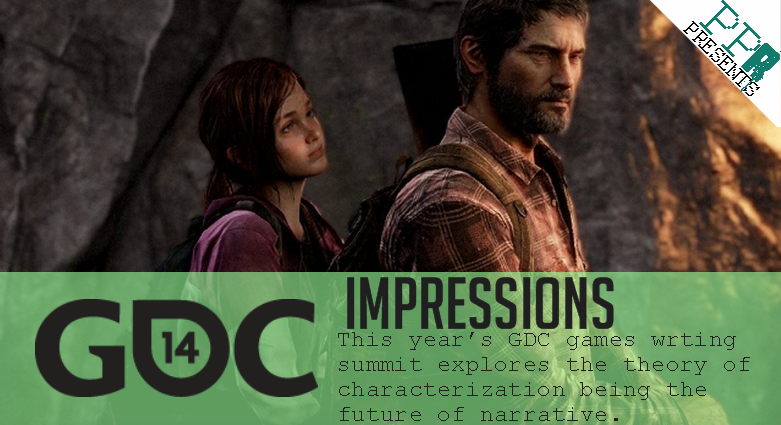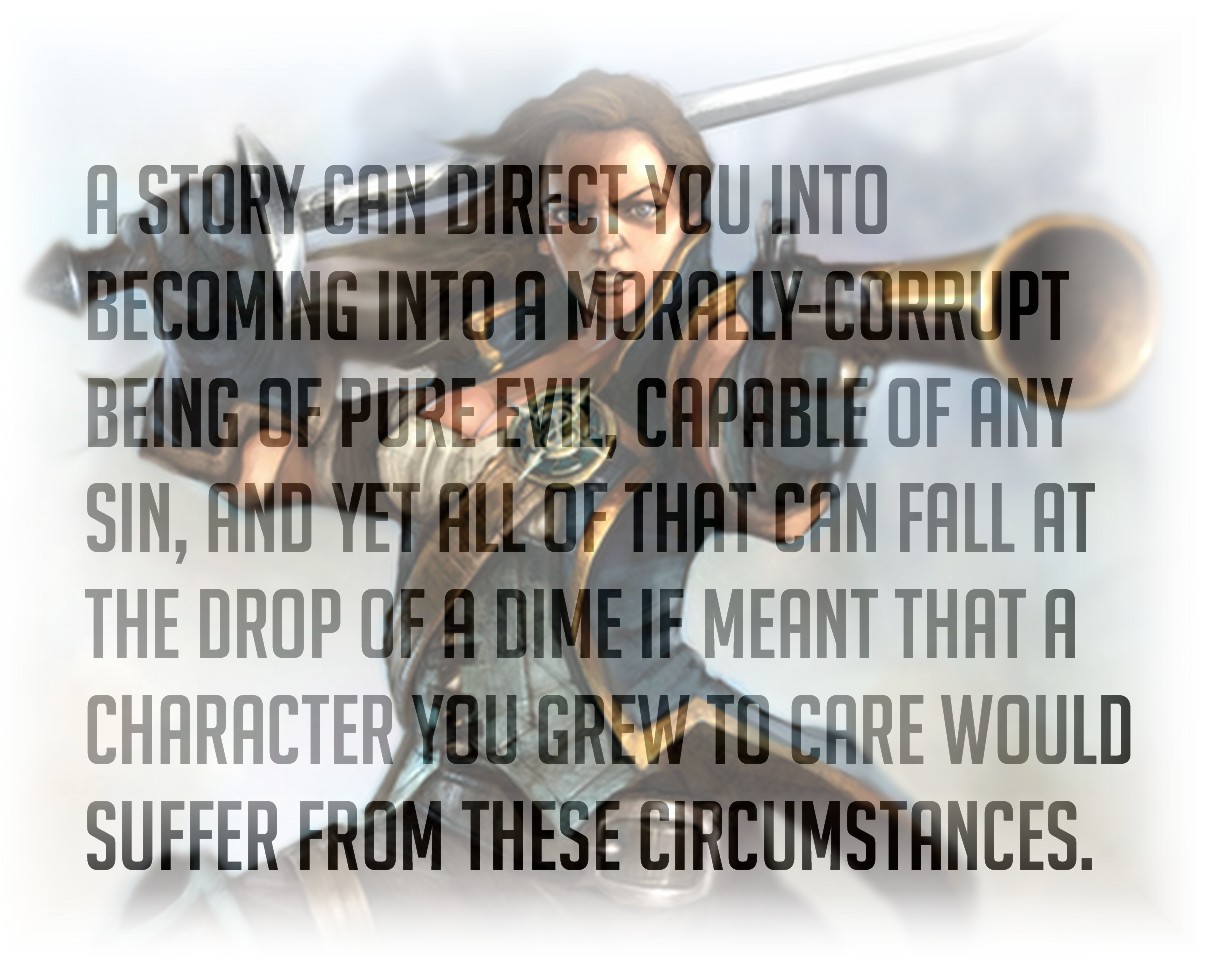
 he art of weaving an engaging fiction for the most interactive media in existence pens out like one of the easiest tasks in game development. The reality, however, is far from it. As we’re entering into the eighth generation of video games, an age where the latest foundation of tech at hand can simulate the most realistic of atmospheres and imagery, games still struggle to escape the trappings of the self-derived conceit that is ludonarrative dissonance, among other shortcomings -- Why?
he art of weaving an engaging fiction for the most interactive media in existence pens out like one of the easiest tasks in game development. The reality, however, is far from it. As we’re entering into the eighth generation of video games, an age where the latest foundation of tech at hand can simulate the most realistic of atmospheres and imagery, games still struggle to escape the trappings of the self-derived conceit that is ludonarrative dissonance, among other shortcomings -- Why?
The journey to fix these flaws and expand storytelling into new, more refined territories is a challenge that several developers attempt to tackle during every Game Developers Conference. While last year’s efforts focused on what could improve the writing that composes these tales, this year tackles the art of direction and engagement, and factors that motivate the gamer to emotionally invest into the narrative.
Deborah Henderson of Microsoft starts by enforcing the importance of characters and why this element is more crucial than any premise, setting, or conflict. It’s the characters themselves that define the importance of the aforementioned components, and Henderson reinforces this argument by researching raw input from players directly.
 Starting things slow, Henderson recounts how she selected specific titles that emphasize an epic plot, then surveys what the players specifically took from their play sessions and analyzes the specific qualities that she believes resonated the best with those players. These defining moments are dissected through a character pyramid made of four integral features that any character can convey, whether they’re a minor or major character.
Starting things slow, Henderson recounts how she selected specific titles that emphasize an epic plot, then surveys what the players specifically took from their play sessions and analyzes the specific qualities that she believes resonated the best with those players. These defining moments are dissected through a character pyramid made of four integral features that any character can convey, whether they’re a minor or major character.
These listed ingredients achieve the best possible immersion, according to Henderson, being core mechanics, learning systems, first hour experience, and the extended experience in this order. As an example, she cites a testimonial from one individual who played Skyrim at the time. When asked about the most memorable moment t he could recall, he described a “scary lady.” He describes the lady in a vague, yet candid summary that detailed how her voice and appearance intimidated immediately, and how the conversation with her didn’t go much better as he felt helpless against the dialogue that she commanded the better part of. In the end, he could advance past her, and the result left a powerful impact on him.
Breaking down the events back from the start, Henderson highlights that the core mechanic of interaction bridged him to a learning system which, in this case, manifested qualities of the scary lady into subtext that articulated her intimidating stature, apprehension towards whatever role she played towards your progress, and an intrigue that now builds towards the intrigue of exploring her very significance, all from the first hour experience which will then build on the extended experience.
Henderson went on to explain how characters can achieve the artifice of a player buying into the notion that they’re influencing the pacing and outcome of a story that’s scripted to follow a predetermined finish, regardless of their actions. When a character has succeeded in building a rapport with the player, she asserts that an illusion is established, and consistently stacking onto this relationship will obtain an investment from the player’s end. The events and conflicts in the narrative take a backseat to the characters who carry the fiction, but still convey the intended impact. Here, she cited the actions of a player in Fable 3. The gamer in question aspired to be the most vile, evil, shit-hearted being in existence, and yet, in the process of reaching this goal, he befriended an individual that he built a real attachment to. Therefore, he answered the call to ensure their welfare when in danger, even though it contradicted the principles of the player’s chosen persona, because that character was an exception to the rule. The result spun the narrative into something much more engrossing than had been prior to that character’s introduction.
investment from the player’s end. The events and conflicts in the narrative take a backseat to the characters who carry the fiction, but still convey the intended impact. Here, she cited the actions of a player in Fable 3. The gamer in question aspired to be the most vile, evil, shit-hearted being in existence, and yet, in the process of reaching this goal, he befriended an individual that he built a real attachment to. Therefore, he answered the call to ensure their welfare when in danger, even though it contradicted the principles of the player’s chosen persona, because that character was an exception to the rule. The result spun the narrative into something much more engrossing than had been prior to that character’s introduction.
Furthering the point, Tom Abernathy of Riot Games, alongside Richard Rouse of Microsoft Studio, spoke on how the traditional Hollywood screenplay structure holds back the potential for the right kind of exposition to happen naturally in the context of interaction. According to Abernathy and Rouse, adhering to the routine of a beginning, start, and end in plot development has progressively lost more gamers as they remember little to any plot detail with each passing year.
Video game campaigns increasing in size hasn’t helped, as the Freytag triangle has gradually evolved into the Syd Field diagram where the middle act is broken into two pinches, complicating the story further into a struggle that holds little to no pop without the right character to drive it.
While vital elements such as setting and conflict play a role in the process of characterization, this proposed model states that characters shouldn’t add to these elements, but should instead contribute to the development of the character. After all, it is they who take the center stage of water cooler discussion, not the doomsday device or legendary prophecy surrounding them.
As agency continues to cross preconceived technical boundaries, this new approach to narrative may just be the path to evolve the storytelling in video games -- a story that doesn’t find a protagonist, but more like one the hero gradually shapes instead.